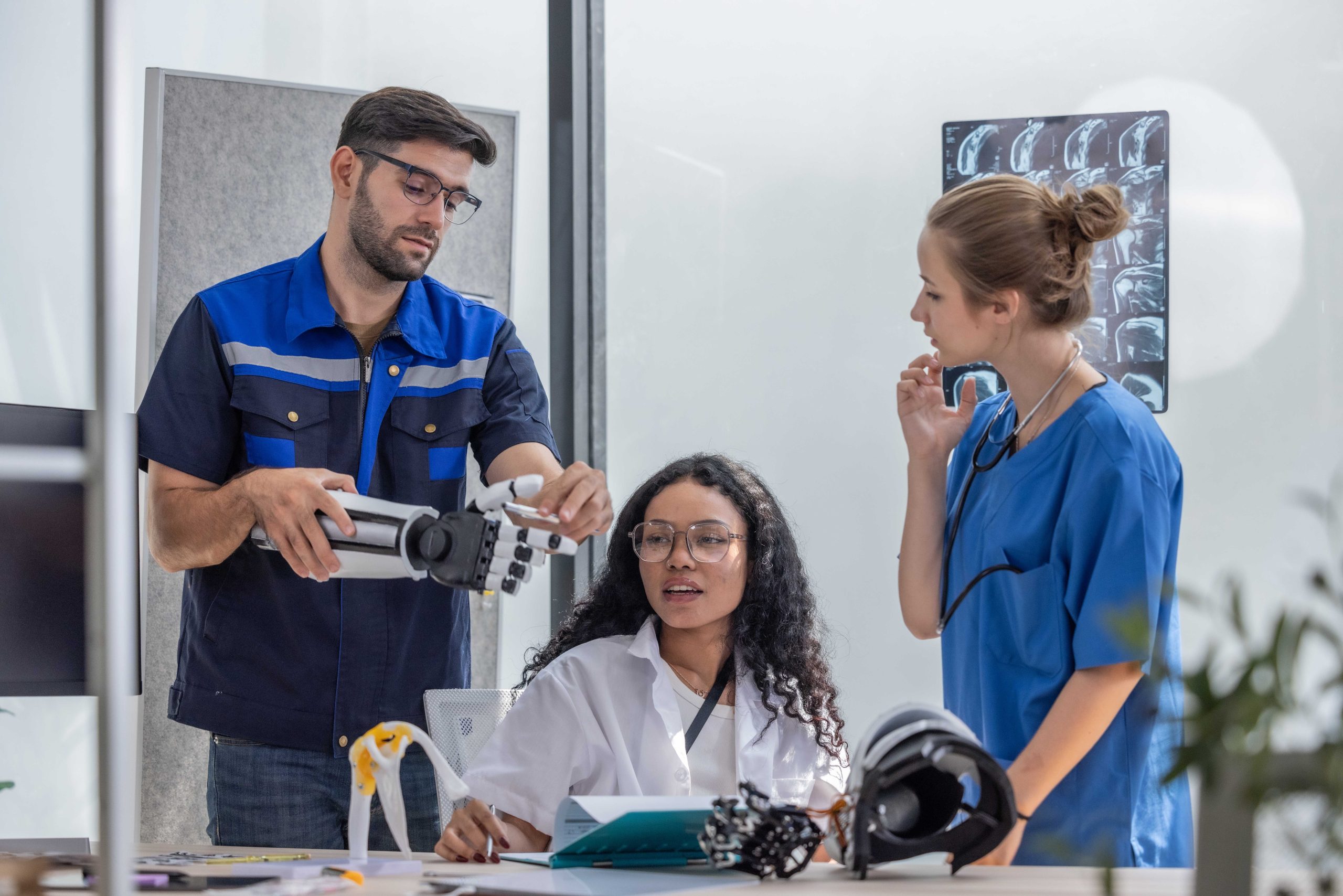When most people think of Autodesk, they envision its core industries like construction, architecture, and manufacturing. However, Autodesk’s capabilities extend far beyond these traditional sectors. With innovative technologies and software, Autodesk is improving the quality of life for disabled individuals around the world. From personalised prosthetics to accessible building designs, Autodesk is empowering people with disabilities and creating a more inclusive world.
Revolutionising Assistive Technology with Customisation
One of the greatest contributions Autodesk makes to improving the lives of disabled individuals is through the creation of customised assistive devices. Using Autodesk Fusion, engineers and designers can create personalised prosthetics and orthotic devices that are tailored to fit the unique needs of each individual. Traditional prosthetics can be bulky and uncomfortable, but with Autodesk’s advanced software, custom designs ensure the perfect fit and function, improving comfort, mobility, and overall quality of life.
For example, the ability to 3D print prosthetic limbs that are tailored to an individual’s exact specifications reduces both production time and costs. Fusion 360 allows designers to model, test, and tweak the prosthetic in a virtual environment, ensuring that the final product meets the wearer’s exact needs before it’s physically created.
Creating Accessible Environments with Inclusive Design
Architects and builders using Autodesk’s Building Information Modeling (BIM) tools, such as Revit, are leading the charge in inclusive design. This approach goes beyond standard construction, focusing on designing spaces that are accessible and usable by everyone, regardless of physical ability. With BIM, architects can simulate real-life scenarios and evaluate how a building’s design affects people with disabilities.
For example, by integrating universal design principles, architects can ensure that buildings feature ramps, wide doorways, and accessible restrooms that accommodate individuals in wheelchairs. Autodesk’s Revit also helps designers account for auditory and visual impairments, with features such as tactile flooring for the visually impaired or designing spaces to reduce background noise for those with hearing impairments.
Digital Twins for Predictive Accessibility
A major innovation driving accessibility is the concept of Digital Twins. A Digital Twin is a virtual replica of a physical space that enables simulations and predictions of how that space will function in the real world. In the context of disability, Autodesk’s Digital Twin technology can be used to predict how individuals with disabilities will interact with a space or device.
For instance, before construction begins, architects can use a Digital Twin to simulate how someone with limited mobility will navigate through a building. This ensures that adjustments can be made to the design to enhance accessibility. As a result, this predictive capability allows architects and designers to create spaces that not only meet regulatory standards but go beyond to offer a truly inclusive experience.
Improving Accessibility in the Workplace
Autodesk also plays a vital role in enhancing workplace accessibility. By integrating its software tools, companies can design and adapt workspaces to better meet the needs of employees with disabilities. From adjusting the layout of office furniture to customising tools and machines, Autodesk ensures that people with disabilities can perform their jobs comfortably and efficiently.
For example, in manufacturing settings, Autodesk software can be used to modify assembly lines to better accommodate workers with physical disabilities. This could include adjusting the height of workstations, ensuring that machinery is accessible, or using automation to support workers who may not be able to perform certain tasks manually.
Empowering Disabled Designers
Not only does Autodesk create tools for designing assistive devices, but it also empowers disabled individuals to become designers themselves. With user-friendly software like Autodesk Tinkercad, people with disabilities can develop the skills to design and create their own tools and solutions. This self-sufficiency is a game-changer, providing individuals with the opportunity to innovate, create, and solve problems that directly impact their own lives.
By using Autodesk’s powerful yet accessible design tools, disabled individuals can explore their creativity and contribute to industries such as product design, architecture, and engineering—industries that may have seemed out of reach in the past.
Supporting Collaboration and Innovation
Autodesk’s commitment to improving quality of life for disabled people extends to the collaborative spaces it fosters. By creating opportunities for designers, engineers, and users to collaborate, Autodesk ensures that innovation is driven by real-world needs. Platforms like Autodesk Research and the Autodesk Foundation support the development of cutting-edge projects aimed at helping people with disabilities. These collaborations ensure that the solutions created are practical, impactful, and relevant.
Autodesk has supported numerous initiatives such as the creation of low-cost prosthetics for developing countries, ensuring that individuals who may not otherwise have access to such technologies can still benefit from them.
Conclusion: A Future of Empowerment
Autodesk is far more than just a tool for construction or manufacturing; it is a catalyst for change, empowering disabled individuals and improving lives worldwide. From creating custom assistive devices to designing inclusive environments, Autodesk’s software is transforming the way we think about accessibility. Its impact on the lives of people with disabilities is profound, offering both immediate benefits and the promise of even greater innovations in the future.
As technology continues to evolve, Autodesk remains at the forefront, driving change, enhancing accessibility, and ensuring that no one is left behind in the digital revolution. For businesses and individuals alike, leveraging Autodesk’s powerful tools can unlock a world of possibilities that enhance lives and create a more inclusive society. Ask us how to utilise these platforms for change here.










